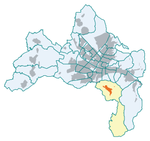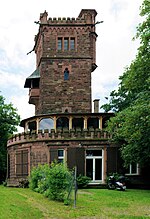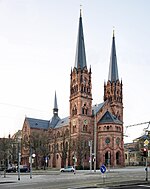Arboretum Freiburg-Günterstal

The Arboretum Freiburg-Günterstal (about 100 hectares) is an arboretum maintained by the University of Freiburg. It is located in Günterstal in the Städtischen Forstamt Freiburg at Günterstalstraße 71, Freiburg, Baden-Württemberg, Germany, and open daily without charge. The arboretum dates back to 1896, or earlier, when its first Douglas fir (Pseudotsuga menziesii) plantations were created to investigate their uses in local forestry. These early plantings focused primarily on useful trees from North America and Japan. Large-scale plantings occurred between 1901-1911 when several hundred thousand foreign trees were planted. After World War II, many rare species were added. Today the arboretum is jointly managed by the university's Forstbotanischen Institute and the Freiburg Botanic Garden, and cultivates around 1,300 tree and shrub species from 60 countries and 5 continents, including mature specimens of Abies nordmanniana, Cedrus atlantica, Chamaecyparis lawsoniana, Cryptomeria japonica, Larix leptolepis, Picea orientalis, Pinus austriaca, Pinus banksiana, Pinus strobus, Pinus ponderosa, Pseudotsuga menziesii, and Sequoiadendron, as well as deciduous trees including Juglans nigra, Populus x canadensis, Quercus rubra, and Robinia pseudacacia. Two walking paths, each 2 km in length, provide identifying information.
Excerpt from the Wikipedia article Arboretum Freiburg-Günterstal (License: CC BY-SA 3.0, Authors, Images).Arboretum Freiburg-Günterstal
Günterstälerweg, Freiburg im Breisgau Günterstal
Geographical coordinates (GPS) Address Nearby Places Show on map
Geographical coordinates (GPS)
| Latitude | Longitude |
|---|---|
| N 47.97 ° | E 7.852 ° |
Address
Günterstälerweg
Günterstälerweg
79100 Freiburg im Breisgau, Günterstal
Baden-Württemberg, Germany
Open on Google Maps









